41 identify categories of information found on food labels
How to Understand and Use the Nutrition Facts Label | FDA Overview. The information in the main or top section (see #1-4) of the sample nutrition label (below) can vary with each food and beverage product; it contains product-specific information ... Nutrition information on food labels: Is it read and understood? In Europe, the provision of such information is not compulsory, unless a nutrition or health claim is made. However, a recent EU-funded research project, FLABEL (Food Labelling to Advance Better Education for Life) has shown that on average 85% of products contained nutrition information on the back of the pack and around 48% on the front. 1.
The Truth About Food Labels - Macros Inc The first type of claim is a health claim.. "Health claims describe a relationship between a food substance… and reduced risk of a disease or health-related condition." 2 The claims are limited to disease risk reduction, not the "diagnosis, cure, mitigation, or treatment of disease." 3 In other words, these are the phrases on food packaging that describe how certain nutrients like ...

Identify categories of information found on food labels
Food labelling - Food and nutrition | NHS inform Nutrition labels must display the amount of energy (calories and kilojoules) and the amount of fat, saturated fat, carbohydrates, sugars, proteins and salt (all expressed in grams) present in 100g (or 100 ml) of the food. In addition to the mandatory requirements above, nutrition information may also be expressed per portion provided the number ... Common Information on Food Labels - University of Kentucky Typically, the ingredients list can be found under or next to the Nutrition Facts Label. Reading the ingredients list can help you quickly identify ingredients in the food item. Product Dates. There are three types of product dates that you may see listed on your food or drink item. "Sell by" tells you how long the manufacturer suggests the ... Food Labels: Carbohydrates | Home & Garden Information Center The Daily Value (DV) for total carbohydrate is 300 grams (g) or 100% DV, based on a 2,000-calorie diet. This number combines several types of carbohydrates: dietary fiber, sugars and complex carbohydrates. Listed below total carbohydrate on the food label are the values for dietary fiber and sugars.
Identify categories of information found on food labels. All about Food Labels - HealthCheckSystems Lean. Less than 10 grams of fat, 4.5 g of saturated fat, and 95 mg of cholesterol per (100 gram) serving of meat, poultry or seafood. Light (fat) 50% or less of the fat than in the comparison food (ex: 50% less fat than our regular cheese) Light (calories) 1/3 fewer calories than the comparison food. High-Fiber. Food Labels | Nutrition.gov What's New with the Nutrition Facts Label. HHS, Food and Drug Administration. The U.S. Food and Drug Administration (FDA) has updated the Nutrition Facts label on packaged foods and beverages with a fresh design that will make it easier for you to make informed food choices that contribute to lifelong healthy eating habits. What's in a Name? PDF 4-H Animal Science Lesson Plan Nutrition Level 1,2 Feed Labels Nutrition Level 1,2 Feed Labels Sarah D. Baker, Extension Educator Goal (learning objective) Youth will learn about ingredients and identify types of information found on feed labels. Supplies Handout 1 "Feed Tag Worksheet" (enough copies for group) Handout 2 "Cereal Box Worksheet" (enough cop-ies for group) Food labels & nutritional information | Raising Children Network protein. fat. carbohydrates. sugars. dietary fibre. sodium. The nutritional information on food labels helps you work out how healthy a food is. But keep in mind that some of the healthiest foods can be unlabelled - fresh fruit and vegetables, wholegrain breads, nuts, lentils, beans, fresh lean meats and fish.
What is required on a food label? - USDA A meat and poultry label is required to contain 8 features. These are: the product name, inspection legend and est. number, handling statement, net weight statement, ingredients statement, address line, nutrition facts, and; safe handling instructions. These requirements are found in the Code of Federal Regulations (9CFR 317.2/381 Subpart N). Understanding Food Nutrition Labels | American Heart Association Remember that the information shown in the label is based on a diet of 2,000 calories a day. You may need less or more than 2,000 calories depending upon your age, gender, activity level, and whether you're trying to lose, gain or maintain your weight. When the Nutrition Facts label says a food contains "0 g" of trans fat, but includes ... What information is on a food label? | - From Hunger To Hope A short tutorial to reading the Nutrition Facts label is provided below. Step 1: Begin by determining the serving size. Step 2: Determine the total number of calories consumed. Step 3: Use the Percent Daily Values as a Reference Point. Step 4: Review the Nutrition Glossary. How To Read Food and Beverage Labels - National Institute on Aging At the top of the Nutrition Facts label, you will find the total number of servings in the container and the food or beverage's serving size. The serving size on the label is based on the amount of food that people may typically eat at one time and is not a recommendation of how much to eat. Read more about serving and portion sizes.
Key Elements of a Food Label To Know | Food Labeling Info Additional Terms to Consider. Customers nowadays want to make sure that they're getting the most value for their money. Third-party certifications - like the Non-GMO Project and American Grassfed Association - are helping consumers determine whether food products really live up to its label claim(s). Below are some popular terms you can use to attract customers if your product can back ... About food labels - Canada.ca By law, most packaged food must be labelled with: a nutrition facts table, which gives you information on: serving size. calories. nutrients. percent daily values (% DV) an ingredient list, which lists all the ingredients in a food by weight. this begins with the ingredient that weighs the most and ends with the ingredient that weighs the least. Food labels - Better Health Channel Reduced fat or salt - should be at least a 25% reduction from the original product. Low fat - must contain less than 3% fat for solid foods (1.5% for liquid foods). Fat free - must be less than 0.15% fat. Percentage of fat - remember 80% fat free is the same as 20% fat, which is a large amount. Information Required on a Food Label: What to Know - The Label Link Do You Know the Key Information For Your Food Label Information Required on a Food Label: What You Must Know Before You Print. Nice work! You've designed your labels and you're happy with how they look. The colors have turned out spectacular and you've even added your own brand's flair. You've opted to use the ever popular varnish ...
Food Labeling & Nutrition | FDA Food labeling is required for most prepared foods, such as breads, cereals, canned and frozen foods, snacks, desserts, drinks, etc. Nutrition labeling for raw produce (fruits and vegetables) and ...
PDF Food Labeling Guide - Food and Drug Administration 4. table of contents 1. i ntroduction 4 2. b ackground 4 3. g eneral f ood l abeling r equirements 5 n ame of f ood 7 juices 5. n et q uantity of c ontents s tatements 14 6. i ngredient l ists 17 ...
Food Labels: Carbohydrates | Home & Garden Information Center The Daily Value (DV) for total carbohydrate is 300 grams (g) or 100% DV, based on a 2,000-calorie diet. This number combines several types of carbohydrates: dietary fiber, sugars and complex carbohydrates. Listed below total carbohydrate on the food label are the values for dietary fiber and sugars.
Common Information on Food Labels - University of Kentucky Typically, the ingredients list can be found under or next to the Nutrition Facts Label. Reading the ingredients list can help you quickly identify ingredients in the food item. Product Dates. There are three types of product dates that you may see listed on your food or drink item. "Sell by" tells you how long the manufacturer suggests the ...
Food labelling - Food and nutrition | NHS inform Nutrition labels must display the amount of energy (calories and kilojoules) and the amount of fat, saturated fat, carbohydrates, sugars, proteins and salt (all expressed in grams) present in 100g (or 100 ml) of the food. In addition to the mandatory requirements above, nutrition information may also be expressed per portion provided the number ...





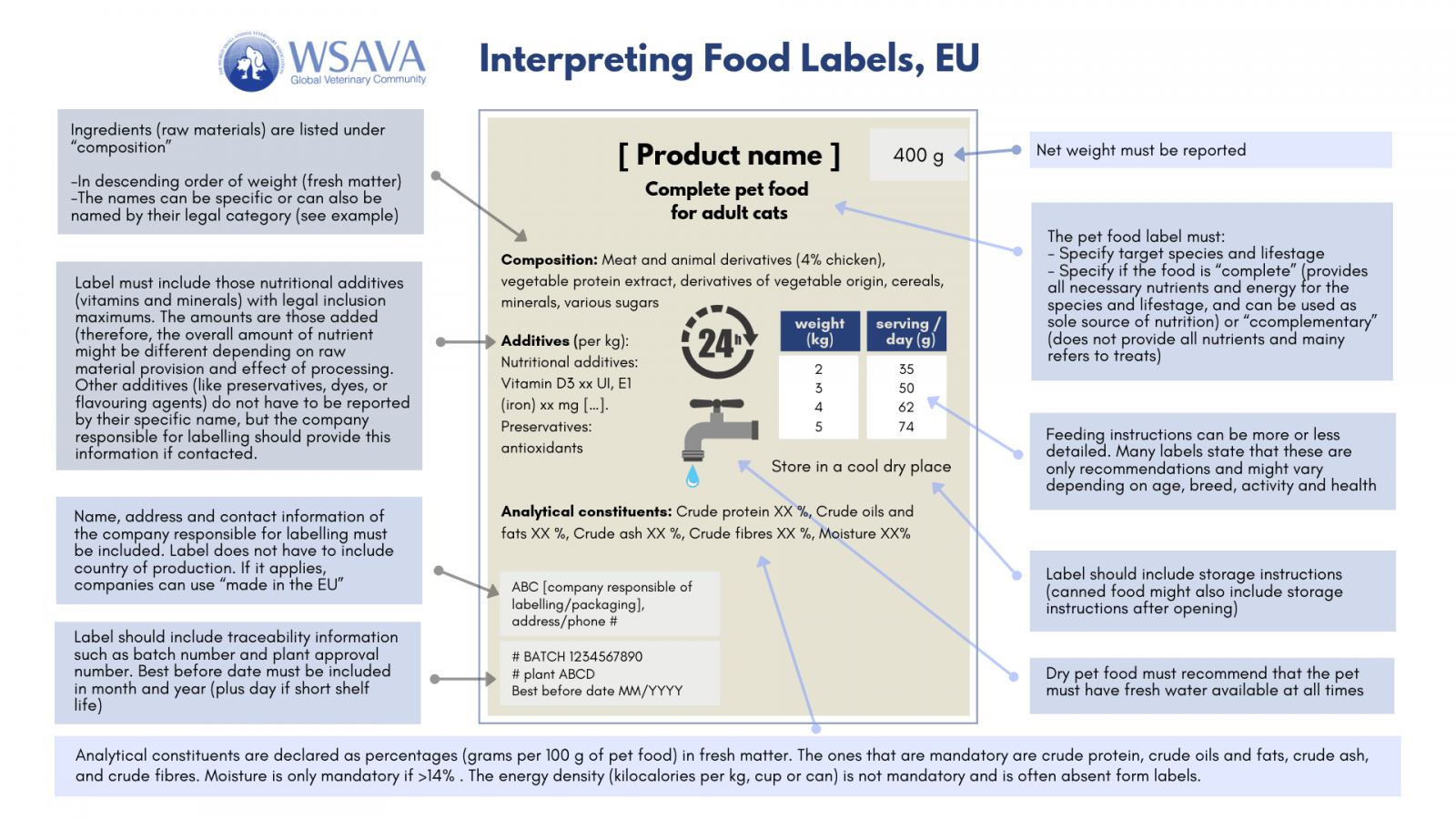





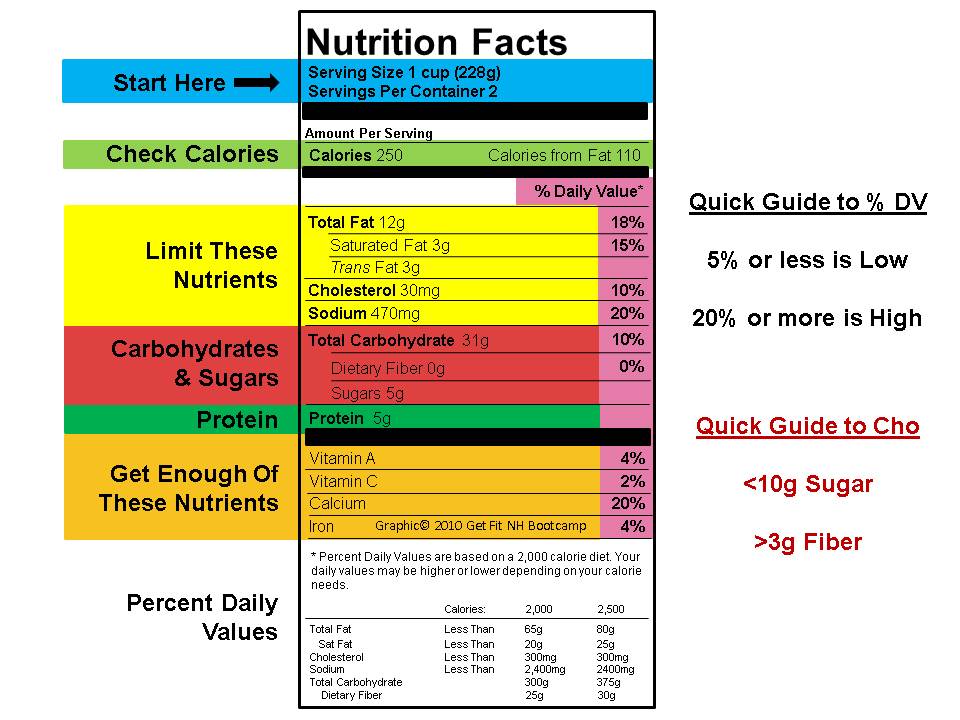

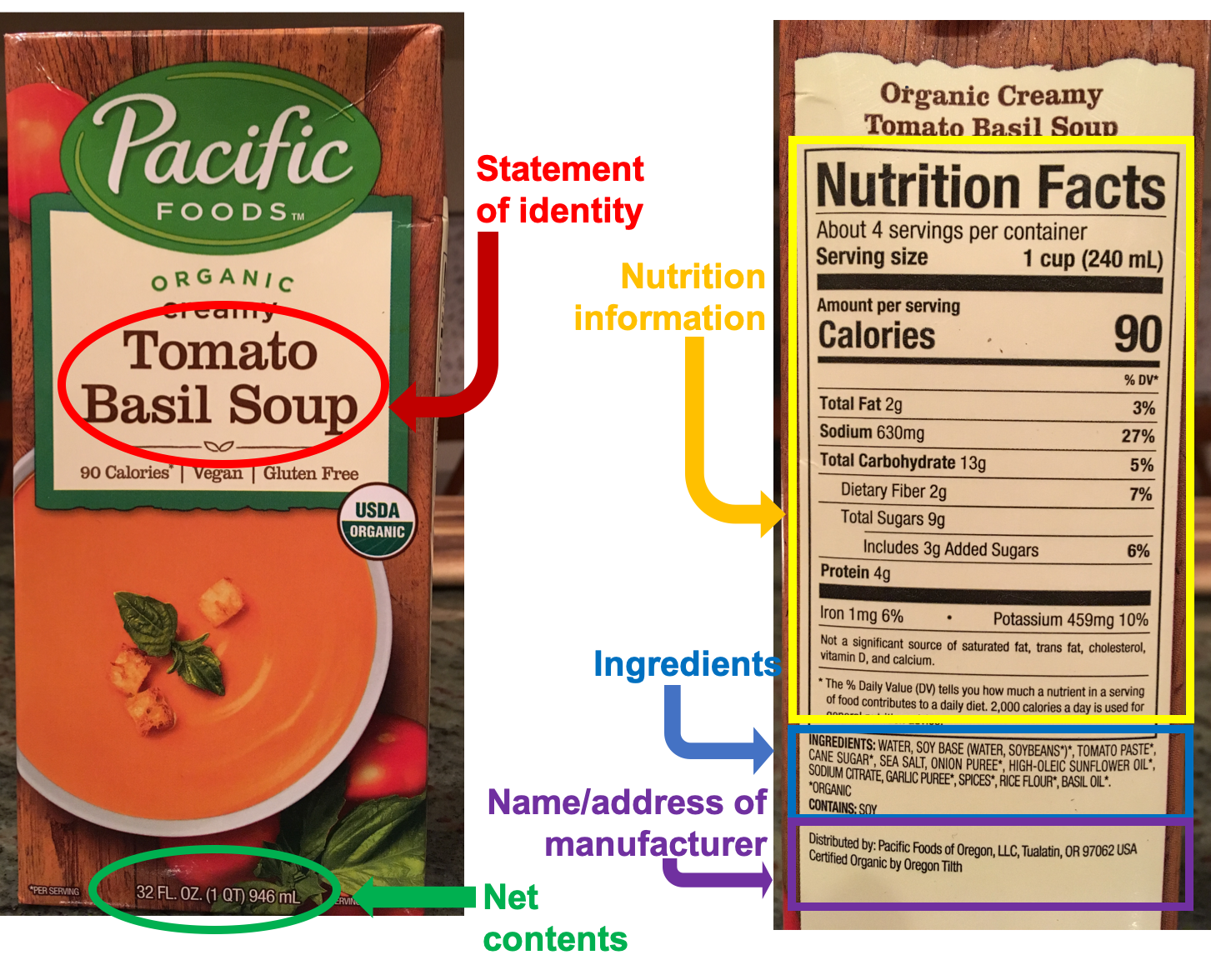


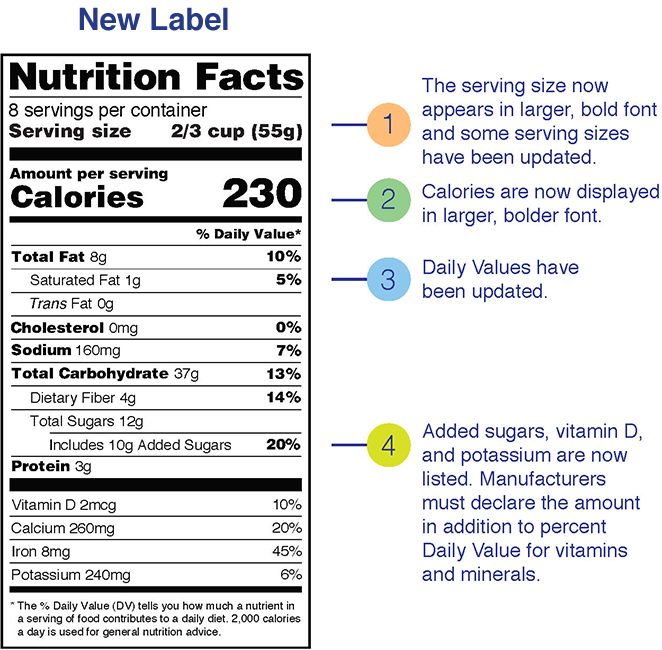
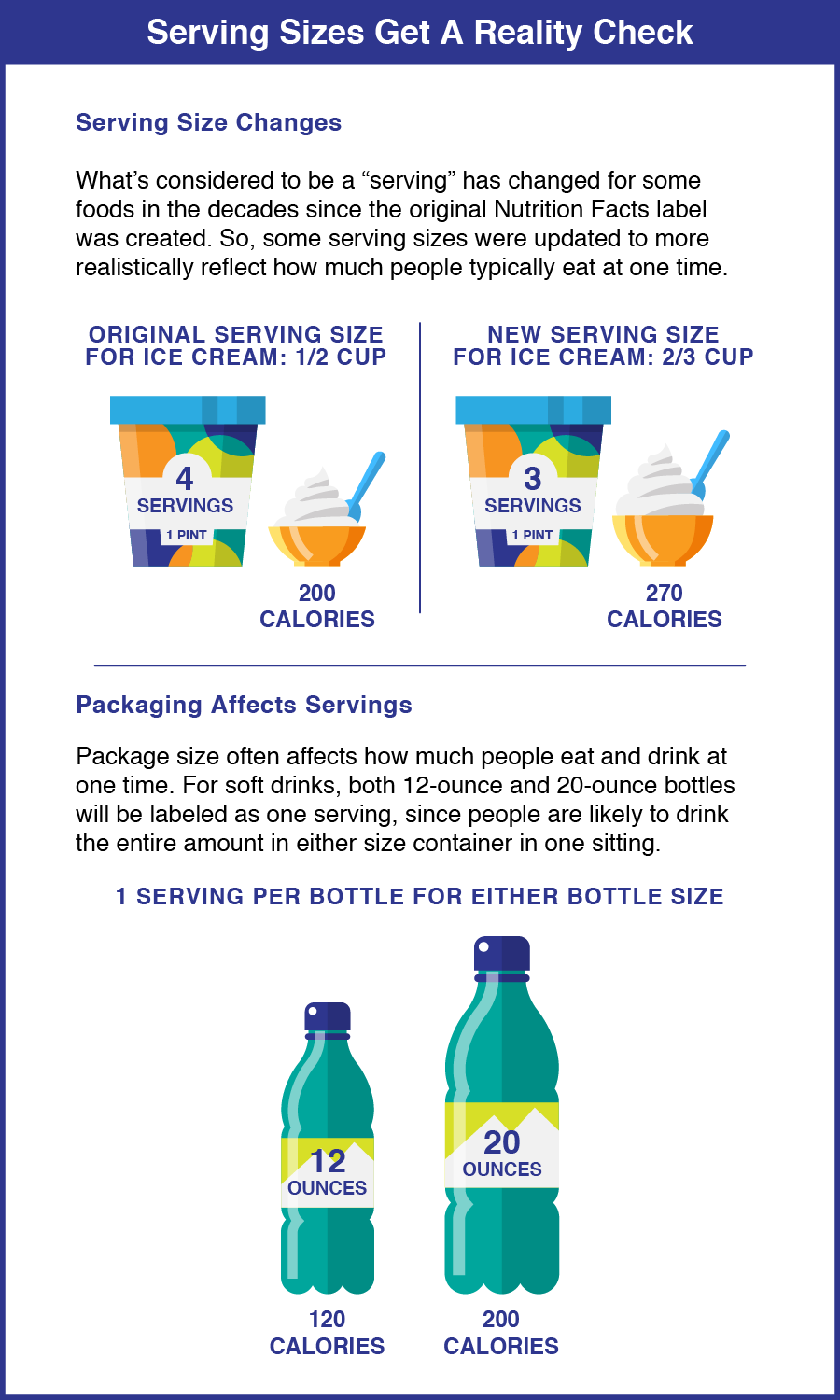

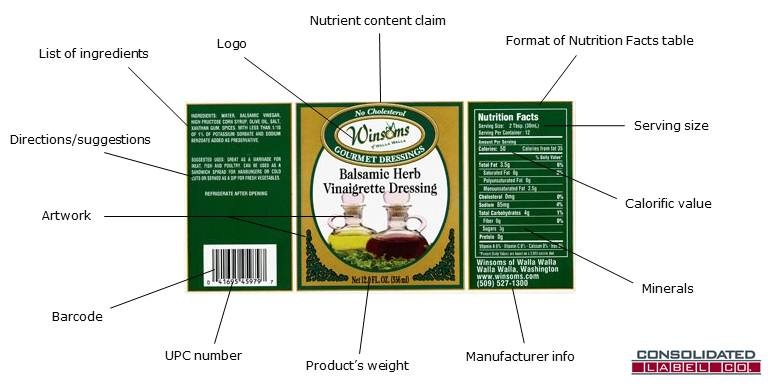





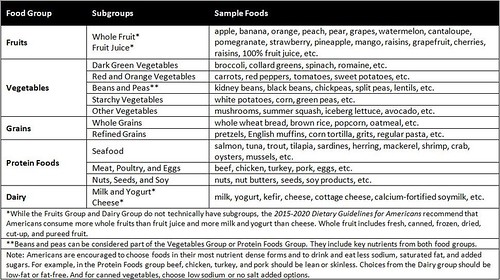
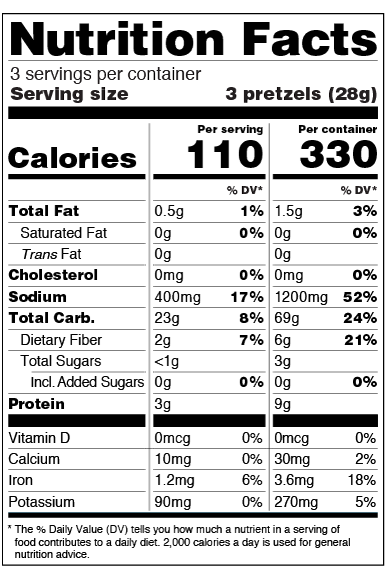
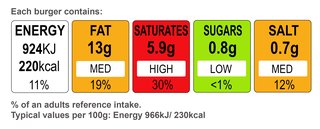



/Food-label-Envision-575f13f25f9b58f22ee9a2dc.jpg)
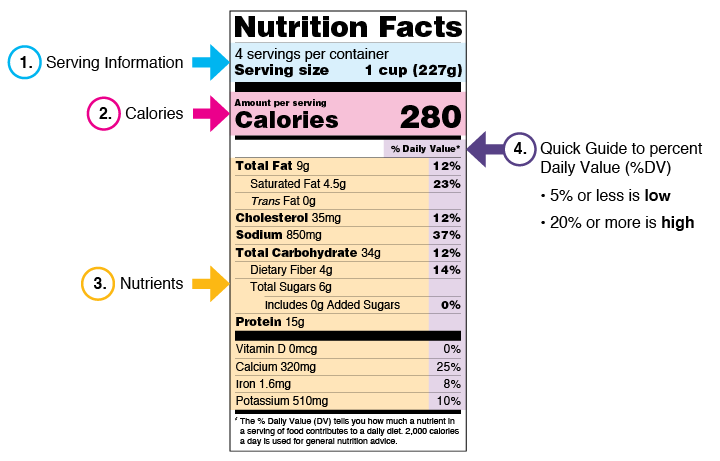
Post a Comment for "41 identify categories of information found on food labels"